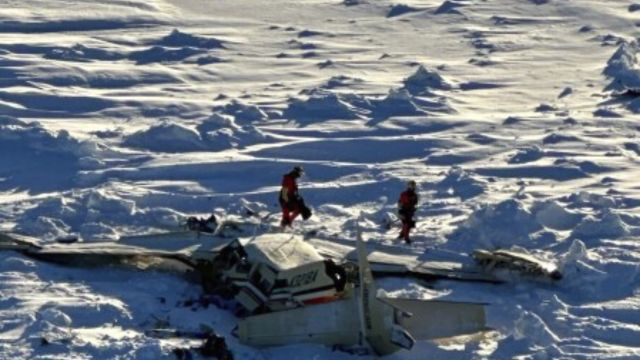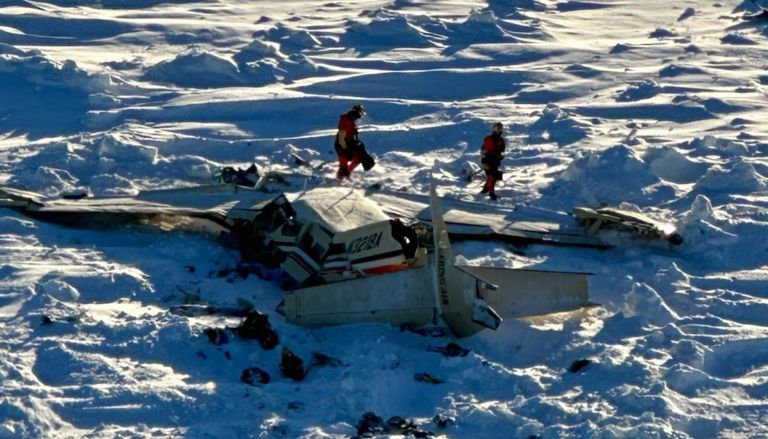JUNEAU, Alaska — A small passenger plane crashed in western Alaska while heading to Nome. It was found on sea ice on Friday, and all 10 people on board have died, officials said. The crash was one of the deadliest in the state in the past 25 years.
Rescuers were looking for the plane’s last known position by chopper when they found the wreckage, according to Mike Salerno from the U.S. Coast Guard. Two rescue divers were sent down to check things out.
A picture from the Coast Guard showed the broken airplane and debris on the sea ice. Two people in bright emergency gear walked around the wreck.
“It’s tough to accept that we’ve lost,” said U.S. Sen. Lisa Murkowski at a news conference in the evening.
Nome Mayor John Handeland choked up as he addressed the deaths and the response effort.
Nome is a strong town, and during tough times, we unite and help one another. Handeland said he expects the help to keep coming in the next few days as everyone works to recover from this tragic event.
A prayer service was scheduled for later tonight.
The focus was already moving to a recovery operation due to quickly changing situations. Officials discussed difficulties such as bad weather expected in the next 18 hours and unstable “young ice” that was slushy.
“They are on the ice right now,” said Jim West, the head of the Nome Volunteer Fire Department. “The situation is always changing, so we need to act quickly and safely.”
On Thursday afternoon, a single-engine turboprop plane from Bering Air was flying from Unalakleet with nine people and a pilot, according to Alaska’s Department of Public Safety. The company said the plane was full, carrying as many passengers as it could.
The Cessna Caravan took off from Unalakleet at 2:37 p.m., and officials lost touch with it in less than an hour, said David Olson, the operations director for Bering Air. There was light snow and fog, with a temperature of 17 degrees (minus 8.3 Celsius), according to the National Weather Service.
The Coast Guard reported that the plane disappeared around 30 miles southeast of Nome.
Radar forensic data provided by the U.S. Civil Air Patrol showed that about 3:18 p.m., the plane had “some kind of event which caused them to experience a rapid loss in elevation and a rapid loss in speed,” Coast Guard Lt. Cmdr. Benjamin McIntyre-Coble said. “I’m not sure what that event is.”
McIntyre-Coble said he didn’t know of any distress messages from the plane. Planes have a device that helps locate them in emergencies. If the device comes into contact with seawater, it sends a signal to a satellite. The satellite then sends the message to the Coast Guard, suggesting that a plane might be in trouble. He said the Coast Guard did not receive any such texts.

There were 10 adults on the plane, and it was a normal business flight, according to Lt. Ben Endres of the Alaska State Troopers.
According to Alaska’s News Source, the two people who died in the crash were on a work trip for a non-profit native health group. The names of the other people have not been made public.
Local, state, and government agencies helped with the search by exploring icy waters and searching through miles of frozen land.
The National Transportation Safety Board is bringing nine people from different states to the location.
Flying is an important way to travel in Alaska because the area is large and there aren’t many roads. Most communities do not have access to the main road system used by the state’s largest areas, so it’s normal to travel by small plane.
Some high school teams travel by plane to compete against rival schools, and many towns receive goods by boat or airplane.







Leave a Comment